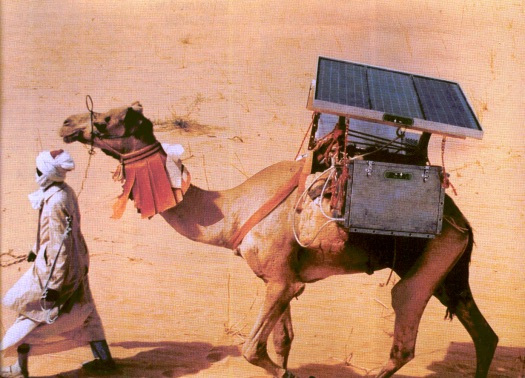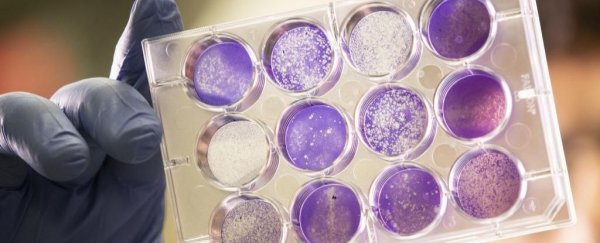Vaccines are only as good as the people they treat and absolutely no good if they are spoiled by heat along the way.
It's a challenge so great that in some remote parts of the world, this precious medicine has to be transported by camels carrying solar-powered mini refrigerators on their backs. Other populations never get them at all.
The need for an uninterrupted, refrigerated trail of vaccines is known as the "cold chain", and in most cases requires consistent storage between 2–8 °C, all the way from production to dispersal; otherwise, it could lay waste to the entire process.
"You can spend all kinds of money developing a vaccine, but if it is deactivated by high temperature an hour before you can give it to someone, it doesn't matter," says Ali Ashkar, a pathologist who specialises in immunology at McMaster University in Canada.
There are few technical immunisation issues more important, and Ashkar and his colleagues now think they have invented a potential solution, one that could allow vaccines to go unrefrigerated for weeks at a time in warm and remote areas.
While other tactics have focused on reengineering the vaccines or modifying their vectors, this new method is based on the simple addition of sugar.
In this case, however, the viruses are mixed and then dried into a sugary film, created from a combination of two FDA-approved food preservatives, called pullulan and trehalose.
Suspended in this solution, the vaccines can be transported without the need for constant cooling. To reactive them, local clinicians need only add water before administering them to patients, as fresh as if they came from a fridge.
 A solar-powered mini fridge on a camel's back. (Vaxopedia)
A solar-powered mini fridge on a camel's back. (Vaxopedia)
"One possible explanation for the synergistic behavior between these two compounds may be that trehalose provides protection during desiccation while pullulan offers long-term stability by immobilising the viruses in a glassy matrix," the authors explain.
So far, the effectiveness has only been tested in mice, so we need to take it with a grain of salt. But using the Herpes Simplex Virus type 2 and the Influenza A virus as examples, using this technique, both vaccines could withstand 40 °C temperatures (104 °F) for at least two months.
Even better, the process retains light, durable, compact doses of the vaccine, which are ideal for shipping and transporting.
Before this novel solution can be put to the ultimate test, the researchers need to see whether these results translate safely to humans and whether the method works on any other vaccines.
If the team can follow through on both these tasks, their relatively cheap process would eliminate almost all the costs of vaccine transport, which today can often account for 80 percent of the entire inoculation process.
"This, to us, is the ultimate application of this technology," says the paper's lead author and chemical engineer Vincent Leung.
"To imagine that something we worked on in the lab could one day be used to save people's lives is very exciting."
The authors are particularly excited by the prospects for the distribution of the Ebola vaccine, which currently requires constant frigid temperatures between –70°C or –80°C throughout the entire cold chain.
The ability to transport fragile vaccines is a major cause of under-vaccination worldwide, and in some cases, it is making eradication of these deadly viruses impossible.
"This problem is especially serious in developing countries and remote areas, which often lack dependable cold chain infrastructure and/or access to reliable electricity," the authors write.
"These challenges are compounded with rapid global climate change which have significantly increased the spread of infectious diseases such as malaria, dengue fever, and zika."
Rarely do the consequences of these outbreaks remain local. If a disease is allowed to spread unchecked among vulnerable populations, it can all too easily reach other exposed pockets in more populated countries, as measles did in the United States just this year.
The inventors have just applied to the Gates Foundation for funding, and according to The National Post, the team hopes they can bring the product to market with a year.
This study has been published in Scientific Reports.
